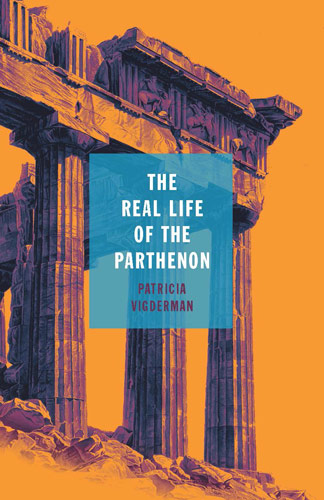The Real Life of the Parthenon
Patricia Vigderman’s book, The Real Life of the Parthenon, appealed to me because, like her, I’d walked up to the Acropolis in Athens, Greece. My walk was during a honeymoon, hers—for the most part—were more empirical.
Patricia Vigderman’s book, The Real Life of the Parthenon, appealed to me because, like her, I’d walked up to the Acropolis in Athens, Greece. My walk was during a honeymoon, hers—for the most part—were more empirical.
Vigderman first traveled to Greece when her parents were posted to the American Embassy in Athens. During her reintroduction years later, she “wanted to see again that sentimental shore: I went back to Greece at first as if to embrace what I had missed. [ . . . ] In my absence, however, time had brought to the thrill of classical heritage [ . . . ] troubling new claims and scandals—and it had certainly stripped away a lot of sentimentality.”
She finds the Acropolis undergoing restoration, leading her to explore the paths that landed historical Greek objects in other countries. Among her key interests was the Elgin Marbles. In the early 1800s, Lord Thomas Elgin thought it would be a good idea to move artifacts from Athens to The British Museum in London. Much controversy, pro and con, has ensued ever since regarding which country should possess these riches. Vigderman writes:
Fault lines run through any claims on antiquity because its objects show us simultaneously who we are and aren’t, what we know and what we don’t know. In embracing the concept “democracy,” modern nations are not troubled that participation in its practice was quite different in fifth-century Athens from the way we think of it today.
Lord Elgin, however, wasn’t the first to plunder monuments. Long before, “Spoliation of the Parthenon and the Acropolis is linked to successive occupation by Romans, Christians, and later Europeans,” she writes, “but the decisive blow to its integrity was dealt by the Venetians in 1687.”
She explains that Venice, in a power struggle “began shelling the Parthenon [ . . . ].” Here she quotes Cristoforo Ivanovich:
Even from the beginning, a certain disorder appeared in the tossing of the bombs [ . . . ]. There followed a terrible explosion in the fire of powder and grenades that were inside . . . . In this way that famous temple of Minerva, which so many centuries and so many wars had not been able to destroy, was ruined.
Vigderman continues, bringing us back to Elgin:
By the time Elgin’s agent arrived in 1801, of course, the Venetian assault had dealt its blow. Many surviving figures from the pediments, metopes, and frieze had already disappeared; columns and carvings had been broken up by the Turks in order to retrieve the bits of lead that attached them to the temple; some of the marble was also being ground up to make mortar.
Back in the U.S., her mission takes her to Getty Villa, a Los Angeles attraction housing Greek and Roman relics. During one visit she writes:
Resting on a bench there I am surrounded by an almost sickening display of gorgeous luxury. It simultaneously evokes the past and denies the actual experience of visiting what’s left of that vanished world, with its flaking columns and unlit frescoes.
What’s more, “Despite our distance from the original culture of an object, we will recognize it as the work of human thought and human hands.”
In pursuing her cause, Vigderman acknowledges:
traveling away from home requires something we didn’t know we had; it shows us life and surroundings to which we are not accustomed and it shows us our own transience and drift. Travel makes the daydream of elsewhere into a warm presence, full of its own historical chance and choices—for better or for worse.
I found The Real Life of the Parthenon quite interesting, though I have an admittedly minor problem with it. Vigderman repeatedly references a “traveling companion” to the extent that I occasionally became more curious about these unnamed persons than what was going on in the narration. She and her companion were even robbed at gunpoint! C’mon. Perhaps their identity is among those she names in her acknowledgments, but doesn’t he or she deserve recognition?
My nitpicking aside, The Real Life of the Parthenon is actually a wealth of information, opinions and disputes about who should rightfully possess antiquities and what their significance is in the course of history. I hope this book will find a broad audience so readers can share in the author’s spirited dedication to her subject.





